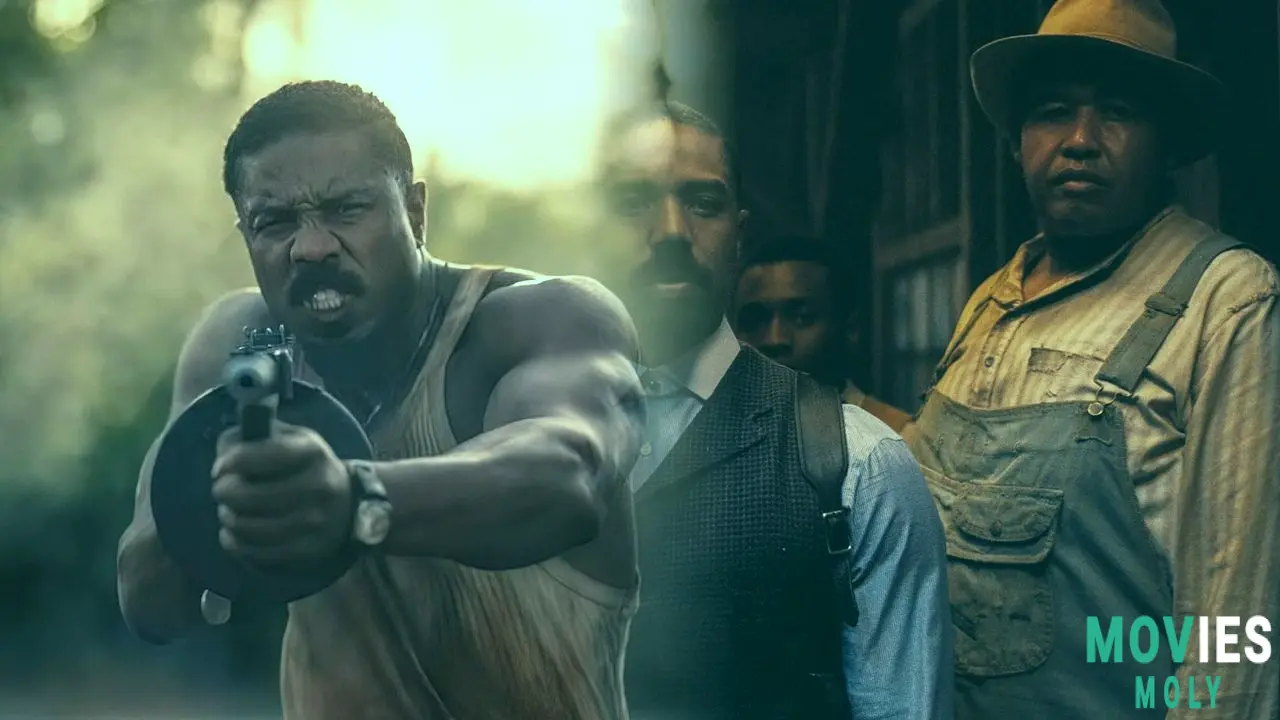By Nicolas Ayala
In a film teeming with symbolism, soul, and supernatural vengeance, it’s easy to get swept up in the magnetic presence of Michael B. Jordan’s dual performance or the visionary direction of Ryan Coogler. But hidden within the blood-soaked blues of Sinners is a quietly explosive turn from Miles Caton that not only anchors the film’s emotional core but also propels its genre-bending narrative into mythic territory.
The Musical Prodigy Who Bridges Past, Present, and Afterlife in Coogler’s Vampiric VisionCaton plays Sammie, a young, gifted musician whose journey through the film’s 24-hour horror odyssey is as much spiritual as it is mortal. Set in 1932 Clarksdale, Mississippi, Sinners follows twins Smoke and Stack—both portrayed by Jordan—as they attempt to build a juke joint into a sanctuary for Black expression. Sammie’s arrival at the party ignites a sequence that is nothing short of cinematic alchemy.
In a scene that seamlessly blends African tribal rhythms with the energy of modern trap, Sammie’s performance becomes a temporal battleground. Drums echo into the future. Dancers break into the past. It’s a celebration of Black culture that refuses to be linear, a space where life and death coalesce through the power of music. And in the middle of it all is Sammie—whose playing doesn’t just entertain, but transcends.
More Than a Side Character: How Sammie Becomes the Heart and Soul of “Sinners”

What makes Caton’s Sammie extraordinary is how he shifts from being an enthusiastic participant in the twins’ dream to a mystical conduit for the film’s deeper themes. Coogler, never one to settle for surface-level storytelling, uses Sammie’s gift as a way to explore generational trauma, creativity, and the immortal nature of Black joy. When Remmick (Jack O’Connell), the white vampire antagonist, crashes the party with his bloodthirsty plans, Sammie’s music becomes both a weapon and a refuge.
It’s tempting to view the vampires as simple antagonists—interlopers of racial horror barging into a Black utopia. But Sinners complicates this with its portrayal of Remmick and his followers. They’re not just predators; they’re desperate, grieving beings drawn to the same life--defying music that Sammie wields. In this eerie dance of opposition and kinship, Sammie’s role shifts once again. He’s not just playing for survival. He’s playing to connect, to heal, and perhaps, to trap a future where Black culture is co-opted even in death.
A Performance That Speaks Without Needing Words—And That’s the Point

Caton’s Sammie rarely dominates the dialogue, but every note he plays speaks volumes. His performance is an exercise in embodiment—of emotion, of history, of unspoken resilience. The sequence in the juke joint, where time folds and generations of Black expression converge, is a masterclass in visual storytelling. And Sammie is its maestro.
That Coogler chose to climax this sequence with a spiritual Irish folk tune led by Remmick—an undead character with his own complex lineage of oppression—only underlines how Sinners refuses to settle for easy metaphors. Sammie’s music bridges these worlds, offering a moment of unity that is as haunting as it is beautiful. It’s a moment that redefines what it means to be alive, and what it means to fight for a future beyond mere survival.
Why Miles Caton’s Role in “Sinners” Could Be the Start of Something Big

With Sinners earning a $40 million opening over the Easter weekend and critical acclaim that has audiences buzzing, Caton’s performance is already being recognized by those who dig deeper than the surface. This isn’t just a genre flick about vampires—this is Coogler (once again) using fantastical elements to interrogate Black identity, agency, and salvation. And Sammie is right in the middle of that interrogation.
As studios continue to chase franchises and IPs, the fact that Warner Bros. entrusted Coogler with a $90 million original R-rated period horror speaks volumes about where the industry sees value. It's not just in stars like Jordan, but in performances like Caton's—ones that bring texture, soul, and mythos to every frame.
Superhero-Level Symbolism Without the Cape: Sammie Is a Musical Slayer of Time and Trauma

Comic fans and genre enthusiasts know that not every hero wears a cape or brandishes a weapon. Some wield sound, some manipulate time, and some just exist in a space where every move echoes through history. Sammie is that kind of hero. His presence in Sinners turns a blood-soaked night into a ritual of remembrance and revolution. He doesn't just play music—he plays the role of the immortal storyteller, the one who keeps the culture alive even when the bodies fall.
In a movie filled with metaphorical bullets, red-eyed ghouls, and one last desperate stand against the forces of hate, Sammie’s music is the pulse that never dies. That’s power. That’s heroism. That’s Miles Caton.





